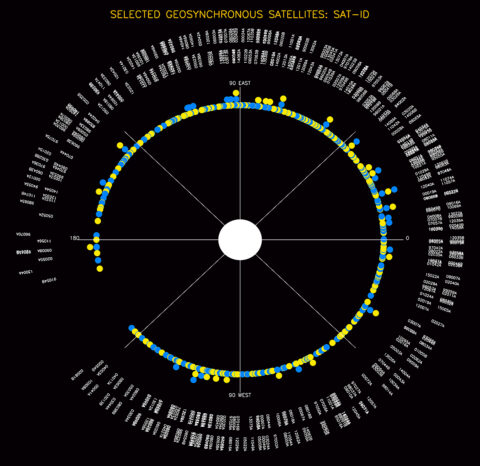Source: Space Weather
More than 400 satellites sit in geosynchronous orbit far above our planet’s surface, where the spacecraft, orbiting at the same rate that our planet is spinning, occupy a fixed region in Earth’s sky. This region—some 36,000 kilometers above the Earth—marks the boundary of Earth’s inner and outer magnetosphere.

There disparate forces from the two regions act on clouds of electrically charged gas particles known as plasma. Charged particles can interfere with satellite functioning, so spacecraft users and operators need to understand the plasma environment in this popular path for military, scientific, and communications satellites.
Scientists, for the most part, create current models of the plasma environment with satellite operators in mind. They focus on predicting how fluxes of energetic electrons and ions, which can cause a buildup of charge on spacecraft materials, will affect satellite systems. Denton et al. sought to create a more comprehensive picture by examining how factors such as solar wind and geomagnetic activity can influence these fluxes in plasma.
The study looked at the largest existing data set of electron and ion fluxes. The measurements were collected by magnetospheric plasma analyzer instruments on board Los Alamos National Laboratory satellites over 17 years and one and a half solar cycles. Because the spacecraft are closely calibrated, the authors combined the data sets from seven satellites for a total of 82 satellite years of observations.
The authors analyzed the massive database along with data on solar activity, geomagnetic activity, energy, and local time to create an empirical model that is capable of much improved ion and electron flux predictions at geosynchronous orbit. As the model matures, the authors hope it will eventually be used to predict fluxes for satellites in geosynchronous orbit as a function of solar wind speed and magnetic field orientation.
To validate the model, the authors compared its predictions with spacecraft data collected by another set of satellites during a 5-day period of both calm and active space weather. They found that the new model’s predictions of plasma flux generally agreed with the satellite observations.
The team has already made a beta version of the model freely available. The authors hope that the new model will be useful for scientists as well as spacecraft operators. (Space Weather, doi:10.1002/2015SW001168, 2015)
—Eric Betz, Freelance Writer
Citation: Betz, E. (2015), Predicting space weather on a satellite superhighway, Eos, 96, doi:10.1029/2015EO034691. Published on 9 September 2015.
Text © 2015. The authors. CC BY-NC 3.0
Except where otherwise noted, images are subject to copyright. Any reuse without express permission from the copyright owner is prohibited.

